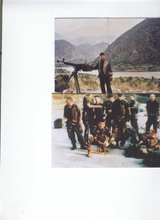Was Jesus divine, or a human being with a powerful message? In Channel 4's The Secret Family of Jesus, Robert Beckford explores the historical evidence for claims that Jesus had brothers and sisters, cousins, aunts, uncles and nephews, as well as a deep friendship with Mary Magdalene. Beckford and many other theologians believe that Jesus did indeed have an extended family that survived some 300 years after his death. However, they have been airbrushed from history and excised from the Bible as the result of a power struggle in the early church. After Jesus died, those descended from his family and friends, led by his brother James, saw the original Christian message as a renewed version of Judaism, and first and foremost wanted to persuade other Jews to join them. In opposition to Jesus' family, Christians led by Peter and Paul wanted to establish a new religion to include non-Jews. Peter and Paul's version won out. They placed more emphasis on Jesus' divinity rather than his humanity, and wrote the human story of Jesus' family out of Christian history.
Peter and Paul's version of Christianity developed in opposition to the Jewish Christianity of Jesus family and friends and resulted in a seam of antisemitism down the ages. Some churches explain the references in the Bible to Jesus' brothers and sisters by saying either that they were not Mary's children but the children of Joseph from a previous marriage, or that they were cousins of Jesus. According to the earliest Gospel (of Mark) Jesus was a disciple of John, who taught and baptised him, and not the other way round. Jews and Muslims see Jesus as a prophet – a human being with a powerful message to change the world – rather than the son of God. Some say that the historical evidence of Jesus' humanity and teachings invalidates 2,000 years of Church teaching that has given more emphasis to his divinity. Some argue that Jesus' humanity and revolutionary teachings – his blueprint for a 'Kingdom of God on earth' – are the foundations of Christian belief.
Christian tradition says that salvation can only come through faith in Jesus Christ as the Son of God and a literal belief that he died and rose again.
A BALANCE MUST BE FOUND BETWEN THE DIVINTY OF CHRIST AND THE HUMANITY OF JESUS. RELIGUOUS JEWS LONG FOR ISIAIH'S PROPHESY OF PEACE AND CO-EXISTANCE TO COME TRUE. WE SHOULD NOT FORGET THE LEGACY OF 'JAMES THE JUST', JESUS' ELDER BROTHER AND FIRST BISHOP OF THE CHURCH OF JERUSALEM OR HIS PATRON MARY MAGDELENE.


